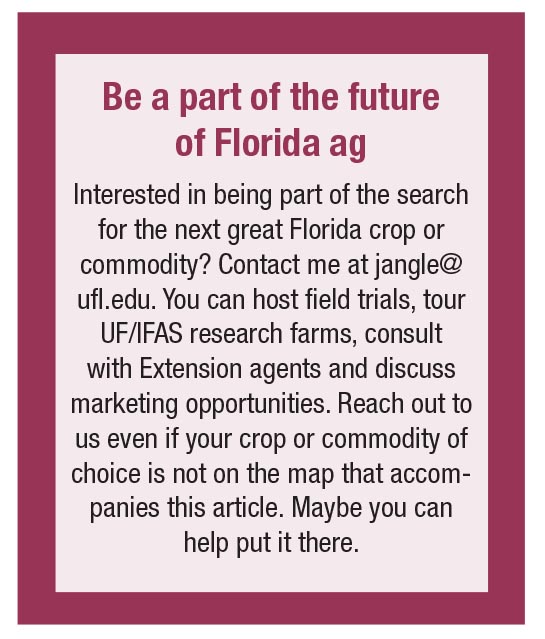By J. Scott Angle, jangle@ufl.edu, @IFAS_VP
Danny Johns is growing the same crop on the same land as his great grandfather did when he started farming in Hastings a century ago.
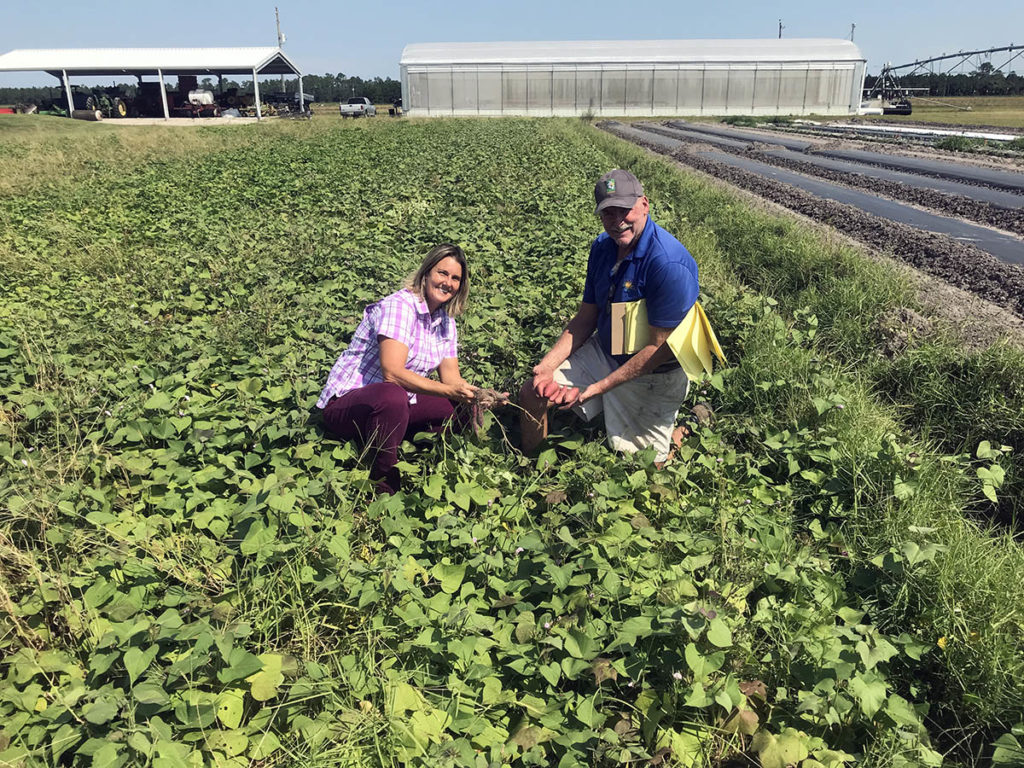
PURPLE SWEET POTATOES
But Johns was immediately interested when University of Florida Institute of Food and Agricultural Sciences (UF/IFAS) Extension agent Wendy Mussoline invited him to look at purple sweet potatoes at the Hastings Agricultural Extension Center. Now he’s growing more than 50 acres of them.
As they say in investing, past performance doesn’t guarantee future results. Johns, who founded Blue Sky Farms in 1987, knows this as well as anyone and is constantly on the lookout for a way to diversify his operation.
So is UF/IFAS. Two years ago, UF/IFAS Research Dean Rob Gilbert and I invested a combined $1.2 million into what we call the Emerging Enterprises Initiative (EEI), a search for future breakthrough Florida commodities.
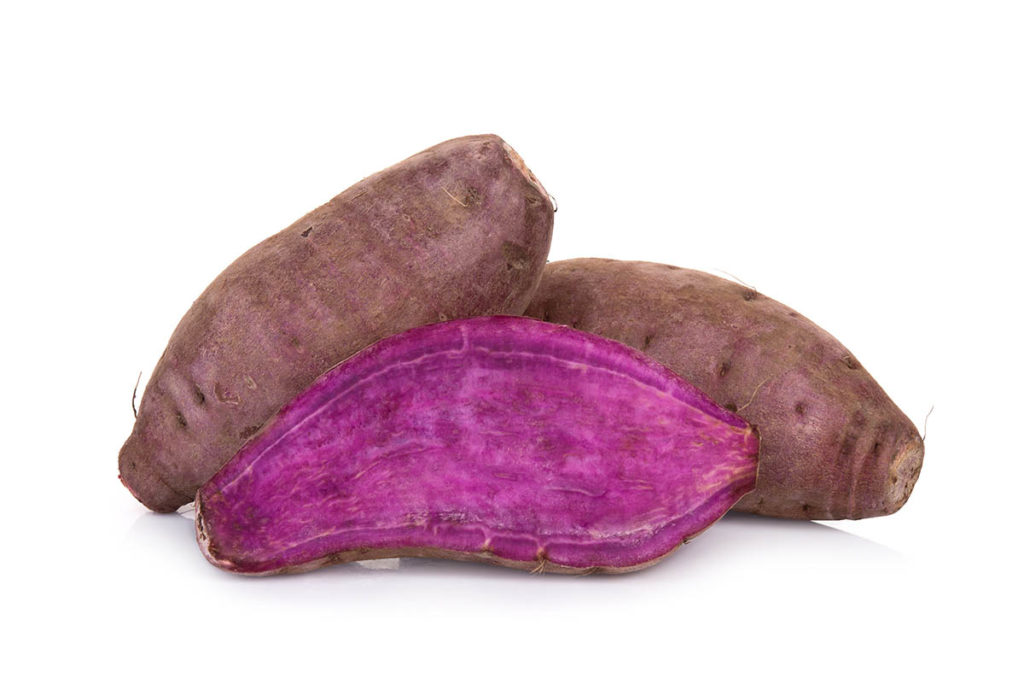
Our researchers brought us dozens of candidates, most of them fruits and vegetables. We funded 19 of them, essentially startup funds for a research team to take a single crop, like sweet potatoes, and identify what keeps Florida from becoming a major producer.
Mussoline and Johns identified sweet potato bottlenecks aplenty: What varieties will grow here? Where do you sell purple sweet potatoes? What do you do with a purple sweet potato?
It’s a risk, and one Johns is willing to take because not looking for alternative crops is a bigger risk. He knows a century of farming doesn’t protect him from the next potato disease, changing consumer preferences, globalization or what happens if a rush of chipping potato producers suddenly decide to compete with him in table stock.
Johns jokes that he agreed to try purple sweet potatoes because, “I try to give my banker something new to look at every year.”
Mussoline traveled up the Eastern Seaboard in search of purple potato varieties, and she recently returned from a conference in Louisiana where she looked for even more.
She has also worked to connect purple sweet potato farmers seeking to recycle the tops by sending them to ranchers who can use them as feed for cattle. She put Johns and his purple food in front of potential future customers — Putnam County school kids.
Our Food Science and Human Nutrition (FSHN) Department worked on the what-do-you-do-with-a-purple-sweet-potato question. Answer: doughnuts! I recently sent Johns a more complete answer — a binder with 10 recipes concocted and tested in the FSHN food lab.
In the next five years, I predict that many more Florida farmers will be growing sweet potatoes. Or pumpkins. Or hops. Or lettuce. I just can’t tell you which one or ones. That’s why we’re taking so many shots on goal.
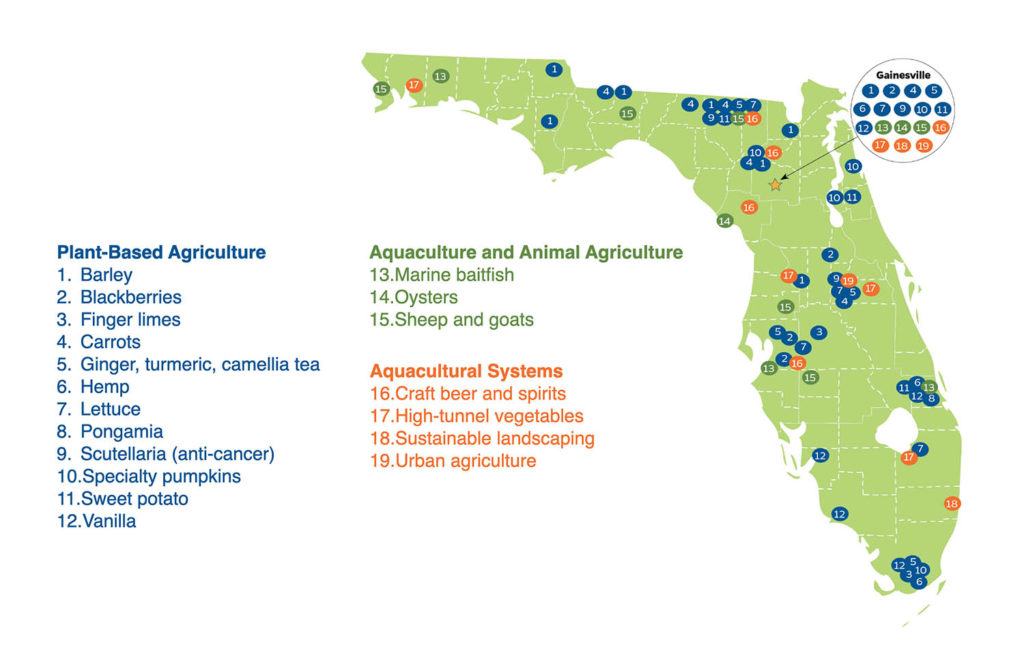
VANILLA
Vanilla is an early success story. UF/IFAS breeder Alan Chambers says Florida could quickly become the fifth-leading producer in the world if it can expand to 500 commercial acres.
The bottleneck here is disease-free planting material, but Chambers has made enough progress in securing it. He expects the first harvest of beans this summer by the first commercial farmers to buy into his vision of large-scale vanilla production. Southern Escape Vanillery in Homestead is part of the family farm of a friend and business partner of Chambers.
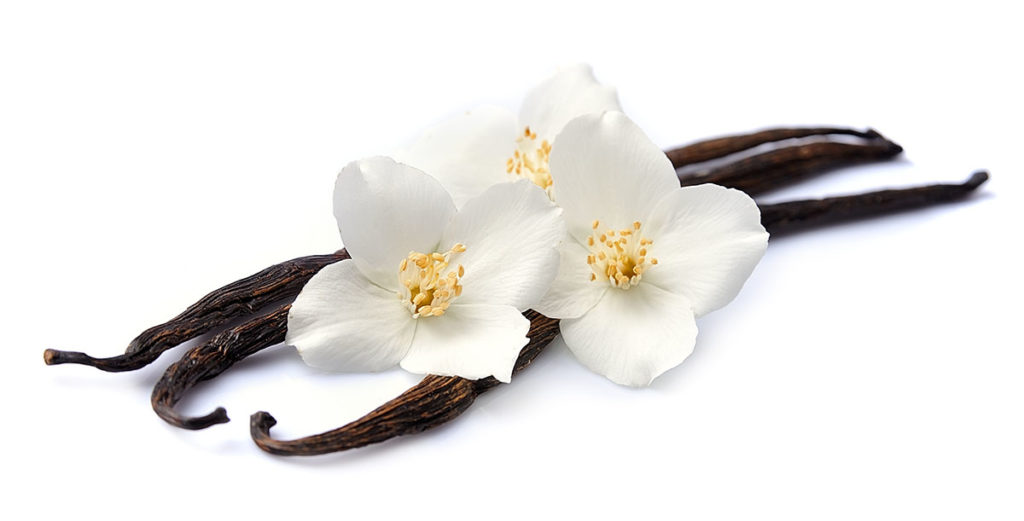
Chambers has found a chocolatier, Miami-based Exquisito Chocolates, which has tested the quality of his plants’ extract by using it to make truffles. (I recently brought boxes to the UF board of trustees meeting as a lip-smacking way to tell the story of UF/IFAS innovation.)
And Chambers has leveraged the $75,000 from his original EEI grant to secure $300,000 in U.S. Department of Agriculture research funding to load his greenhouses with thousands of plants.
OTHER CANDIDATE CROPS
We launched EEI 2.0 in a two-day summit at the Gulf Coast Research and Education Center on Aug. 11–12. We got a progress report on barley, blackberries, carrots, pumpkins and more. Growers and industry reps met in breakout rooms with researchers to discuss collaborating on crops that so far haven’t made our list, like bamboo. Plus, we heard pitches from researchers with their own ideas for new candidate crops.
Johns isn’t waiting for change to force his hand. He’s preparing for it, with the help of UF/IFAS, guided by his brother’s definition of luck: When preparation meets opportunity.
Johns says, “I want to be lucky.”
J. Scott Angle is the University of Florida’s senior vice president for agriculture and natural resources and leader of UF/IFAS.
